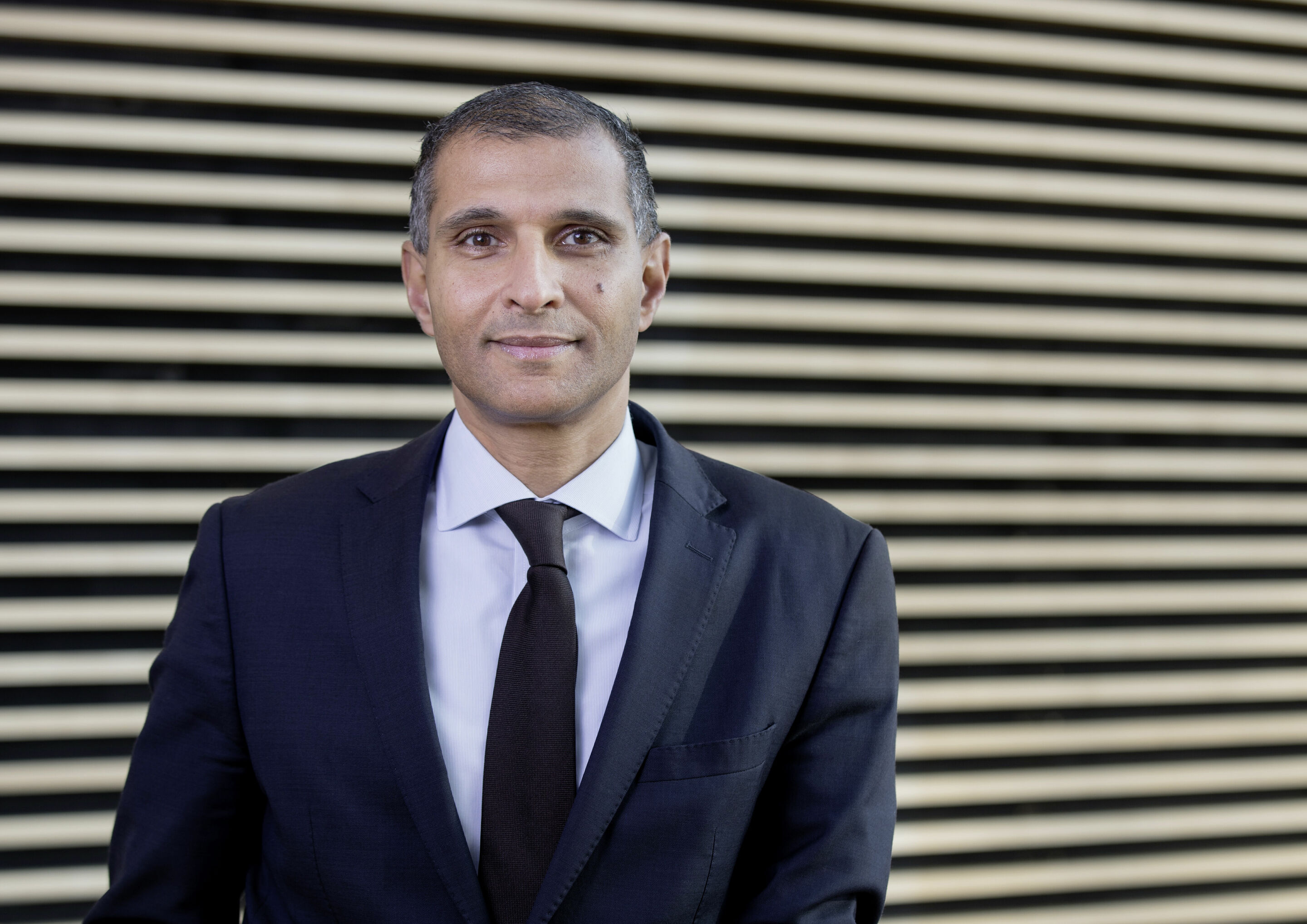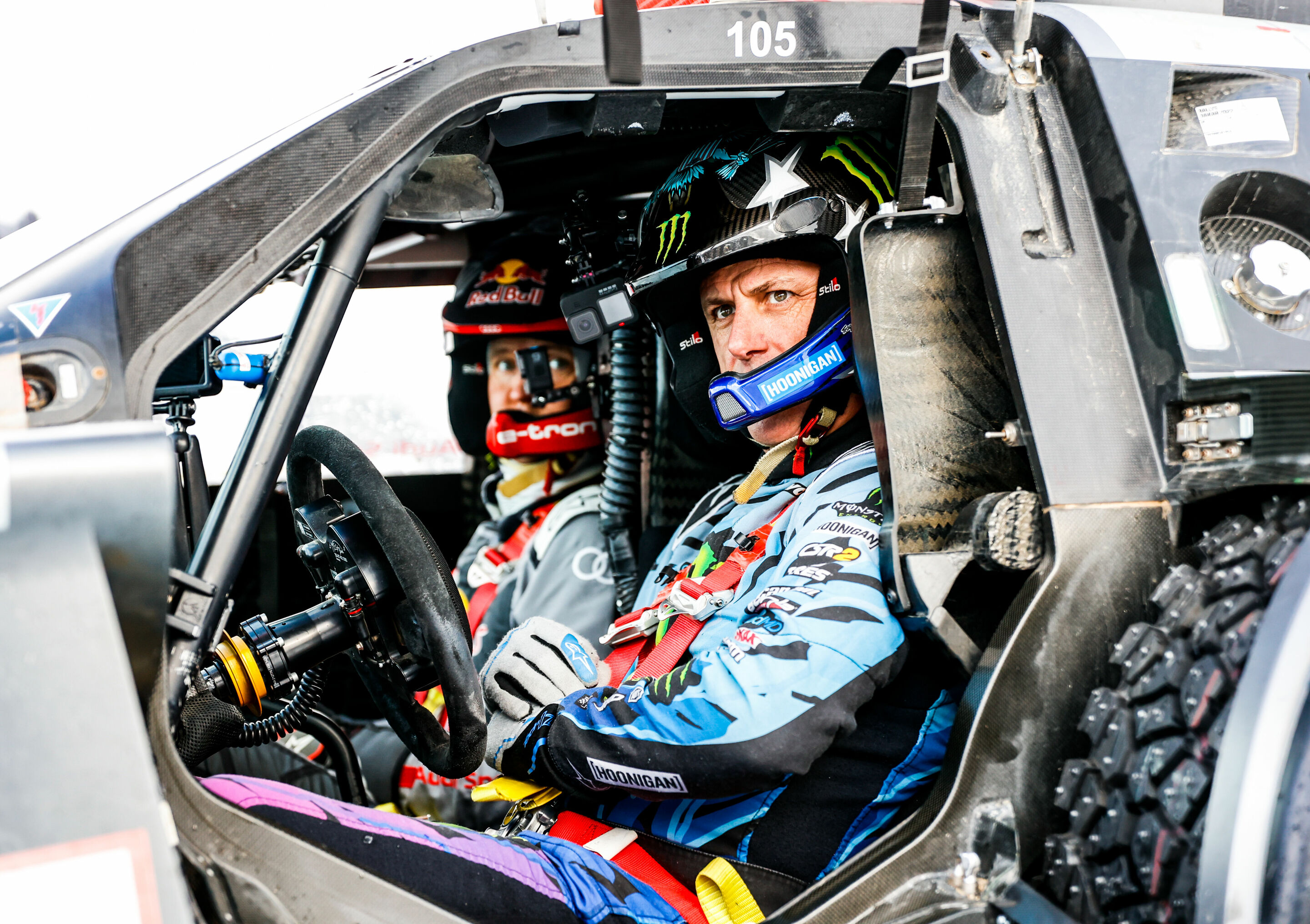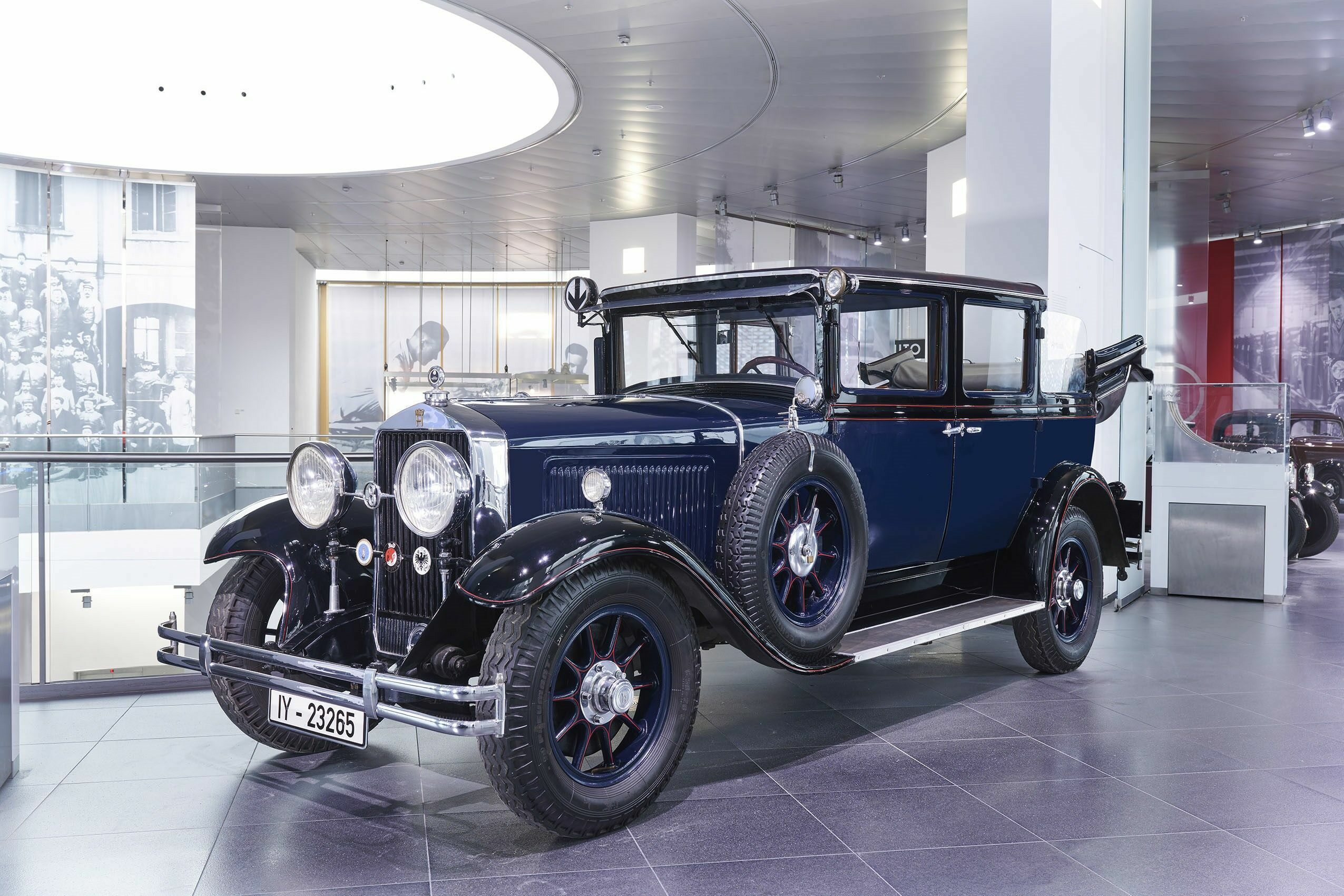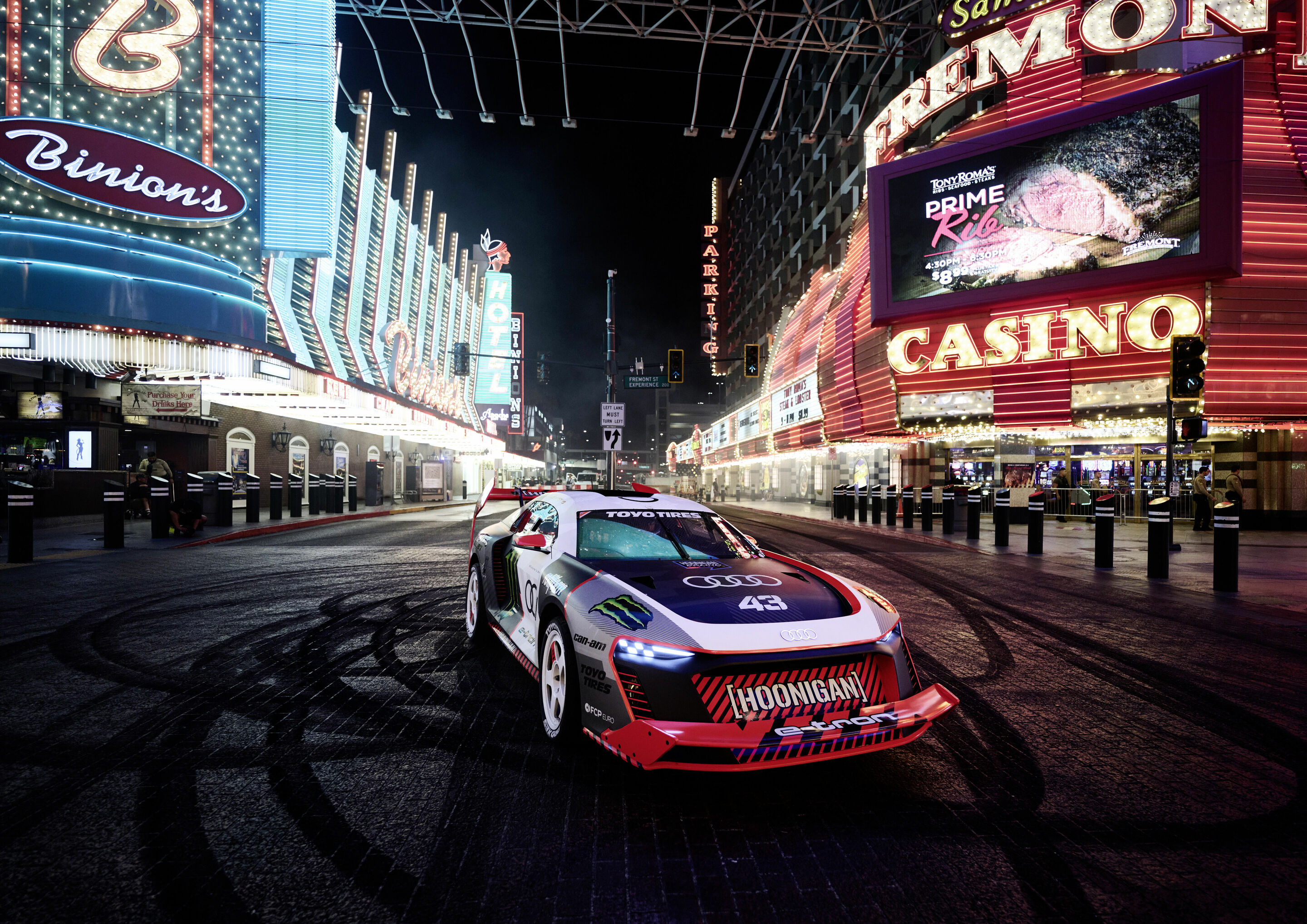Search
All search results for "a2"
(65)
 Leading light: 25 years Audi A2
Leading light: 25 years Audi A2
Premium in the entry-level segment: the Audi A2 – progressive in design and technology, and with top long-term quality The Audi A2 1.2 TDI was the world’s first four-door three-liter car
It was launched 25 years ago – and polarized opinions: the Audi A2. With its innovative aluminum body, the compact car was light, aerodynamic, and economical in terms of consumption. There were five engine variants to choose from; the A2 1.2 TDI caused a sensation as the world’s first four-door three-liter car. And since 2003, the special “colour.storm” edition has attracted attention with its special paint colors. However, since sales fell short of expectations, Audi ended production in 2005 after about five years and 176,377 units built. The innovative Audi A2 can showcase its qualities in a “second career”: as a modern classic with a stable value, the A2 has a loyal fan base and can still be seen on the road today as a daily companion.
In the early 1990s, the three-liter car was announced as a development goal by the Volkswagen Group and Audi, and the first work on the project began shortly afterwards. The designers in Ingolstadt worked closely with the experts at the aluminum center in Neckarsulm. In May 1995, they presented a concept study called “Ringo,” whose Audi Space Frame (ASF) was less complex than the ASF of the Audi A8, which was largely built by hand. Stefan Sielaff – the former head of Audi’s Munich design studio – took over the project and led the interior design, while Belgian designer Luc Donckerwolke handled the exterior. Together with future design chief Gerhard Pfefferle, they gave the “rolling cage” Ringo a two-door body – which proved already close to the later design. As development progressed, two studies were created: one was a show car at the IAA in Frankfurt in 1997 and, in addition to the provisional model designation Al2, it bore the nickname “Light Green” because of its color.
 Audi Tradition to commemorate numerous anniversaries in 2025
Audi Tradition to commemorate numerous anniversaries in 2025
Booklet features a selection of more than two dozen anniversaries The launch of the Audi A2 25 years ago; the first new Audi in post-war times 60 years ago; and Hans Stuck’s record-breaking exploits in the “world’s fastest road-going car” near Lucca 90 years ago
With the “Anniversary Dates 2025” booklet, Audi Tradition is showcasing the most important moments in the product and company history of Audi, which is as eventful as it is diverse. Audi historians have selected a total of 27 dates to commemorate in 2025.
Twenty-five years ago, the Audi A2 hit the market. With its aluminum body, it made a name for itself as a progressive compact car: light, aerodynamic, and economical. The Audi A2 polarized opinion with its design and unusual proportions; the concept was ahead of its time. However, sales remained below expectations, and Audi ended production after roughly five years and 176,377 units built. Since then, the A2 became a fan favorite and is now a sought-after collector’s item. Sixty years ago, the first post–World War II Audi rolled off the production line. With the “Auto Union Audi” vehicle, Auto Union GmbH revived the tradition-steeped Audi brand name in 1965. The new name was meant to show that this car represented a fresh start for Auto Union in terms of technology. The Audi was the first car from the brand with four rings to feature a four-cylinder four-stroke engine, and it marked the beginning of a new era in Ingolstadt. Twenty years later, on January 1, 1985, Audi NSU Auto Union AG was renamed AUDI AG, and since that time, the company and its products have shared the same short, memorable name. Ninety years ago, in February 1935, a spectacular attempt to break speed records took place in Italy. After test drives in October 1934 with the Grand Prix racing car on the AVUS in Berlin, the Auto Union racing department started developing the vehicle that would later be known as the “Lucca” car.
 Dr. Tarek Mashhour - Biography
Dr. Tarek Mashhour - Biography
He then held various management positions within Audi Toolmaking at the Ingolstadt and Neckarsulm sites, in charge of projects for example for the Audi A2, for design technology and for the machine park. Subsequently, Tarek Mashhour was responsible for toolmaking at VW do Brasil. After returning to Audi, he moved to the Procurement division, where he was in charge of purchased‑parts management. In 2009, he was appointed Head of Planning for the Audi’s Neckarsulm, China and Lamborghini plants. After that, he was responsible for production planning at the plants in Brussels (Belgium) and Győr (Hungary), as well as for the planning and implementation of the new Audi plant in San José Chiapa (Mexico). From September 2016, Tarek Mashhour was responsible for the production strategy of AUDI AG, including the key area of digitization. Starting in October 2018, he was the head of series production for electric models at Audi. Since November 1, 2020, Dr. Tarek Mashhour has been Executive President of Audi México.
 After “Windschnittig” comes “Form vollendet”: A new special exhibition at the Audi museum mobile
After “Windschnittig” comes “Form vollendet”: A new special exhibition at the Audi museum mobile
The Audi A2 represents another milestone in aerodynamics. At its debut at the IAA in 1999, its design, geared towards optimum streamlining and unusual proportions at the time, polarized public opinion. The basic model with an aluminum Audi Space Frame body achieved a drag coefficient of 0.28. The Audi engineers continued to tighten the aerodynamic screw with many individual measures and, in this way, reduced the drag coefficient of the Audi A2 1.2 TDI even further. The Audi A2 1.2 TDI is the world's first four-door, three-liter car and will be part of the special exhibition "Form vollendet"; it has a drag coefficient of 0.25 and an average fuel consumption of 2.99 liters per 100 kilometers. Curator Stefan Felber reveals his favorite inclusion in the upcoming exhibition: “The DKW F9 has a special meaning for me – it is the link between the two exhibitions, Windschnittig and Form vollendet. What’s more, this streamlined and seemingly plain car represents the new beginning of Auto Union in West Germany and IFA in East Germany.”
 Ken Block thrilled with the Audi RS Q e-tron
Ken Block thrilled with the Audi RS Q e-tron
Audi Tradition also brought along the Audi quattro A2 Group B rally car, which competed in the 1983 Rally Finland. In addition, a DKW F 91 and a DKW Hartmann Formula V caused quite a stir. For Ken Block, the weekend trip to Europe was like a visit to automotive paradise. “The laps in the Audi RS Q e-tron were a phenomenal experience – even though the car probably feels more comfortable in the desert than in the snow,” said Ken Block. “Thanks to Mattias Ekström, who patiently explained all the special features of his car to me. A few minutes behind the wheel was enough to understand the fascination of this car.” Mattias Ekström was impressed. “It only took three turns for Ken to get fully up to speed,” said the Swede, who, with ninth place, was the most successful Audi driver in the 2022 Dakar Rally. For Ekström, the event in Austria was also the perfect preparation for his participation in the prestigious “Race of Champions”, which was held in the north of Sweden last weekend. Ekström only had to admit defeat to the eventual winner Sébastien Loeb in the semifinals. In addition to testing the Audi RS Q e-tron, Ken Block also took a little trip down memory lane and drifted around the circuit in the Audi quattro A2. For the American, who was inspired by Audi rally cars as a teenager, this was a personal highlight: “An insane moment that I won’t forget in a hurry.” Soon there will be even more moments like this: With the purely electric Audi S1 e-tron quattro Hoonitron, which Audi developed as a one-off exclusively for Ken Block and which was inspired by the Audi Sport quattro S1, the Hoonigan team is producing a video entitled “Electrikhana” that will be released in the next few months and will be the latest chapter of their “Gymkhana” series. Video: Mattias Ekström and Ken Block in the Audi RS Q e-tron
 Audi museum mobile celebrates its 20th birthday
Audi museum mobile celebrates its 20th birthday
34 vehicles from the company's history are new to the permanent exhibition Rally, DTM, Le Mans: motor sport history - an exclusive on the paternoster Now icons such as the Audi TT, Audi RS 4 and Audi A2 are in the museum
It will soon be twenty years since the Audi museum mobile first opened its doors on 15 December 2000. Over the first twenty years of the new millennium, Audi AG has added many chapters to its success story. During that time automotive classics have been created and new milestones in technological development set. To mark the museum's 20th anniversary, this gap has now been closed, giving visitors to the Audi museum mobile a better understanding of the more recent years in Audi's history. From 15 December, 34 new historic vehicle exhibits await visitors to the Audi museum mobile.
As part of this, the huge paternoster will be a delight to behold for all motor sport fans. From now on the history of motor sport at AUDI AG will be taking a ride where previously exhibits for particular topics regularly exchanged places. With the exception of the Auto Union Silver Arrows which will remain in their traditional spot on the third floor of the museum, everything which, since the 1960s, has made Audi into the sporty brand it is will be presented on the revolving platforms which accompany visitors on all four floors. This will lend a completely new quality to the motor sport exhibition. Instead of the present five exhibits, there will now be fourteen. These include the Audi A4 DTM winner from 2007, the Audi Le Mans R8 LMP prototype from 2002, the Audi A4 STW from 1996, an Audi Rally quattro Group 4 from 1980, the Audi Sport quattro Rally Group B from 1985, the NSU 1300 TT "Jägermeister" from 1975 as well as the DKW F11/64 touring car from 1963. This restructuring has made it possible to redesign the previous motor sport exhibition area on the second floor and equip it with more recent Audi icons.
 Ken Block and the Audi S1 Hoonitron electrify Las Vegas
Ken Block and the Audi S1 Hoonitron electrify Las Vegas
Alongside the S1 Hoonitron, the Electrikhana film features brief guest appearances by other models from Audi Tradition, such as the Audi 90 IMSA GTO (1989), the Audi 200 Trans Am (1988), the Audi Sport quattro S1 Pikes Peak (1987), the Audi quattro Gruppe B A2 (1984) as well as the Audi R8 LMP and Audi R18 e-tron quattro from Le Mans. Apropos Le Mans: Tom Kristensen, the record winner of the iconic endurance race with nine triumphs under his belt, makes a brief guest appearance at a red traffic light as well. Link to the Electrikhana video Footage of testing the Audi S1 Hoonitron
 Audi Tradition launches its 2025 event season
Audi Tradition launches its 2025 event season
There, Audi Tradition will commemorate the 25th anniversary of the launch of the Audi A2 and will show a polished aluminum version of the model to mark the occasion. Audi Tradition will also be on hand to answer questions at the Volkswagen Group’s joint stand in Hall 5 for visitors interested in the range of spare parts. On the same weekend, two-time German rally champion Harald Demuth will pilot a 1984 Audi quattro Rallye at the FAT ICE RACE in Zell am See, Austria (February 1).A desert car on ice: Jutta Kleinschmidt, who in 2001 became the first and to date only woman to win the Dakar Rally, will drive the Audi RS Q e-tron, the car that won the 2024 Dakar, in Zell.Action on the ice continues three weeks later in St. Moritz at The I.C.E. concours d’elegance (February 21-22) where Tom Kristensen will present the Audi quattro Group S, built in 1986, on the frozen Lake St. Moritz. Development work began as early as 1985 on this special rally car, featuring a tubular space frame, plastic bodywork, and four-valve turbocharged engine with a mid-engine layout. It was intended for use in the Group S category of rallying planned from 1987 onwards, but it was ultimately not used. The Festival of Speed in Goodwood (July 10–13) attracts motorsport fans from around the world. Audi Tradition will be there to celebrate the first Audi victory at Le Mans 25 years ago – together with Le Mans legends Tom Kristensen and Rinaldo “Dindo” Capello. At the Goodwood Hillclimb, the Auto Union Type 52 driven by Hans-Joachim Stuck, will also be on the starting line along with the Le Mans race cars. Two weeks after Goodwood, Audi Tradition will take part in another festival: the Eifel Rallye Festival (July 24–26) in Daun. Audi Tradition will also be polishing up vehicles from its historical collection in preparation for classic car rallies, for example the Heidelberg Historic (July 4–5), the Donau Classic (July 18–19), and the Sachsen Classic (August 14–16).



